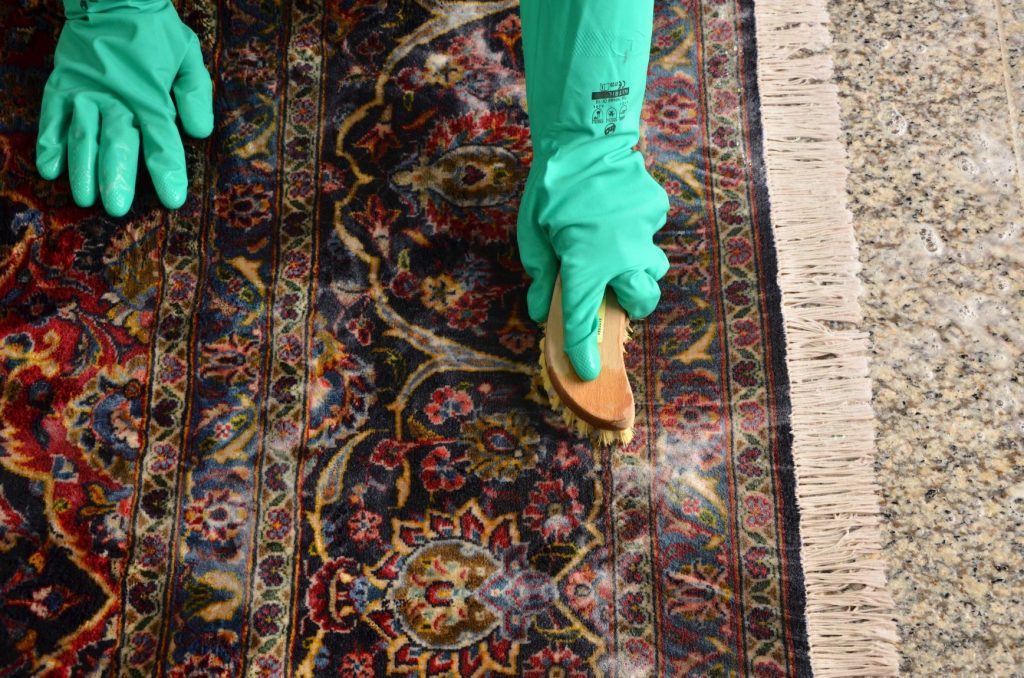Persian rugs are impeccably made, yet specialty rugs of any kind are an investment. Whether it’s an oriental rug, Native American, or Persian – you want to keep it looking as nice as possible in order to further your asset and keep it for years to come. Here are the proper cleaning methods to protect your Persian rug and have it look its best and retain its value.
Persian rugs have specific knotting, fabric, and design. Each Persian rug is a unique work of art, handcrafted by weaving with looms. These exquisite rugs have been seen in homes for over 3500 years, including those of nomads and those of royalty. Iran is where these rugs come from, which was once known as Persia – hence, the name.
Invest in a Rug Pad
The best approach to Persian rug cleaning is preventing the need to. A rug pad is a small expense when it comes to keeping your Persian rug in-shape. Rug pads keep your rug from slipping. This is especially important high traffic areas where rugs are liable to move around. If you simply have a rug for show, you might not have to use a rug pad, although it’s always a good idea regardless. Yet if you have one that does see foot traffic then this keeps the rug from shifting around and helps minimize tearing.
Vacuum Often
According to Home Guides:
Persian carpets are woven from wool, silk and cotton, natural fibers that get worn down as dirt accumulates at the base of the fiber. Set the “beater bar” of the vacuum on high to prevent damage to the fibers. After running the vacuum over the rug once, turn off the “beater bar,” and run the vacuum over it once more, removing surface dirt. This also protects the fibers from becoming wrapped around the vacuum bar and pulling or tearing.
Keep in mind what type of material your rug is made of. For example, you don’t want to tear the loops of a braided area rug or a hand hooked rug. So be careful with what type of suction you use when vacuuming. For those with a flat weave rug, this is not as much of a concern. Simply put, be mindful of the material. While you want to vacuum regularly, you also want to take care that you do not overdo it and snag the loops of the rug.
Taking Care of Spills and Stains
No matter how careful you are, spills and stains happen. Unfortunately, there is no single method of Persian rug cleaning. There are many types of Persian rug that have to be handled differently from the others.
The important thing is to look at the material your rug is. This may be jute, silk, or wool and each of those need a different cleaning method. For example, heat should never be used on a silk rug. And since this material should not be cleaned with abrasives, heat, or steam, it is often best to use a professional.
Wool rugs can be cleaned with a mild detergent and cool water. Just shake out the rug first and be sure not to use too much water when cleaning. Working in a 3×3 grid with a sponge and your cleaning solution is an excellent guide to use. Woolite works well on these rugs since it is specifically for wool items.

Water and jute don’t mix. Jute absorbs moisture easily and tends to hold on to it for a long time which can lead to mold, mildew or harmful bacteria forming. Make sure to dry any spills quickly with paper towels and a hair dryer, limit yourself to spot cleanings, and test any cleaners on an inconspicuous spot first.
For those who are unsure of how to clean their rug or want to ensure that a professional does it, you can call a carpet cleaner who has experience in Persian rugs. In fact, a professional will most likely ask you what type of material it is when you call. This is so they bring the proper cleaning materials – some use dry methods while others require a wet cleaning method.
Rotate Your Rugs
Whether your rug is under furniture, sees heavy foot traffic, or is near a window – rotating it keeps it from wearing unevenly. For instance, if your rug is near a window, a portion of it may see more light than the rest. This can cause uneven fading. With those seeing foot traffic, there is always a part of the rug that may not see as much due to its location. And rugs under furniture may have indentations. None of these outcomes are ideal which is why it is important to rotate your rugs every few months – at least every six months is best. Simply rotate the rug 180 degrees to ensure that it has an even exposure throughout the year. You’ll avoid some of the indentations, fading, and wear and tear that only shows up on a portion of your Persian rug.
More Guides and Help
We offer best rug design and size for your aesthetic and living space, as well as offer access to cleaning, maintenance tips, and customer resources. A Persian rug is an investment and is an important part of your home. Having access to expert tips provides peace of mind that you will be able keep your rug looking as good as new for as long as possible.
